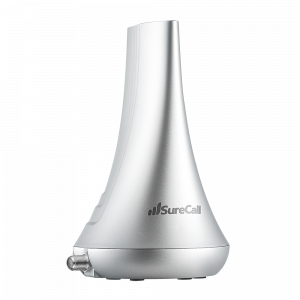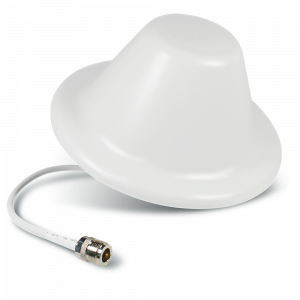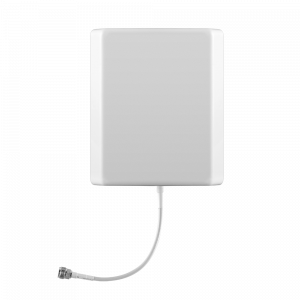Cellular Signal Booster Installation
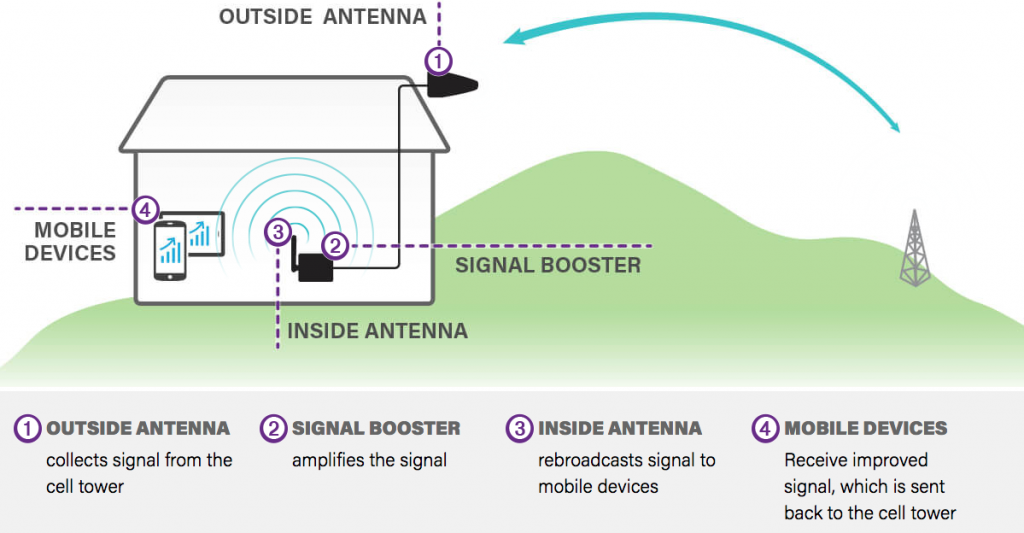
Properly installing a cellular signal booster can make or break the system’s functionality. So, a properly installed cell phone booster can give you amazing results. And a poorly installed cellular booster can have some negative effects. With this in mind, let’s outline a few of the most important points that will lead you to positive results.
Outside Signal Level
The available signal at the outside antenna limits a cell phone signal booster’s ability. It’s important to remember, the cellular signal booster can only amplify an existing signal, it cannot create signal from nothing.
Therefore, you must place the outside antenna where it will provide the best signal from the cell phone tower. Also, keep in mind that you can have “too good” of a signal. For example, using a directional antenna too close to the cell tower could cause the booster to become “overloaded”. This “overloaded” state will keep the signal booster from performing. Because finding the right outside coverage is so crucial, there are a few tricks you can use to ensure a good outside signal.
- Use a signal meter.
SureCall makes an amazing signal meter that works really great to help you locate the best outside signal. Just plug the outside antenna into the meter, and then aim the antenna to find the best signal level.
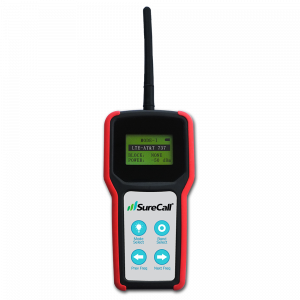
- Use your cellphone.
If you are using a non-directional antenna, you can sometimes use your cell phone to locate the best coverage. Note that it sometimes take a while for the display to update on your phone. You’ll notice that you will need to allow several seconds before the phone will update.
- Use online tools.
There are several websites that can help you to figure out where the nearest cell tower is. CellReception.com is one of my favorites. You just enter your city and state and a google map will quickly show you where the nearest towers are.
Antenna Separation
One of the biggest challenges for engineers developing cellular signal boosters is the issue of feedback. This feedback, also called oscillation, can create serious issues. Luckily, a few years ago, a brilliant engineering team patented the “oscillation detection algorithm” to help out. By the way, I used to work on that brilliant engineering team.
While we will save for another post the in-depth discussion of oscillation, the “Reader’s Digest” version is as follows. Oscillation is when an amplifier (or cellular signal booster) amplifies a signal, receives the amplified signal, then amplifies it again.
In the past, undetected oscillations could shut down a cell phone provider’s tower. Now, all new cellular signal boosters provide oscillation detection due to FCC and cellular carrier requirements. So, the booster will shut itself down if it oscillates, but if it is shut-down, it can’t amplify anything, right?
- Keep the inside and outside antennas away from each other.
The inside and outside antennas need plenty of physical separation. Separate the antennas both vertically and horizontally. In fact, the more separation that you can get between them, the better off you are going to be. So, try to get the outside antenna as high up as possible, and the inside antenna as low as possible. Also, you could place the outside antenna on one end of the house and the inside antenna at the other, pointing away from each other.
- Point them the opposite direction.
If you are using directional antennas, make sure that the antennas are aiming away from each other. Notice the “Sample Cell Phone Signal Booster Installation Diagram” above. It show a very ideal installation scenario. Install your antennas in a similar manner, with them pointing away from each other and as much separation as possible.
The Right Antenna
Cellular signal boosters have many different antenna options. I will quickly highlight the simple differences.
Outdoor Directional

Directional antennas are great for locations where you need a little more help reaching out to the cell tower. They have higher gain than non-directional antennas, but only have the higher gain in the direction they are aimed.
Outdoor Non-directional
Omnidirectional (or non-directional) antennas are great for when you are close to a cell tower, but may have poor coverage indoors.
Indoor Non-directional
Non-directional indoor antennas are usually attached directly to the cellular signal booster and radiate an even signal away from the antenna. They have lower gain than directional antennas, but they evenly dispense signal. They are usually placed in the the middle of the area where the users will be located.
Indoor Directional
Directional indoor antennas are usually attached to a cable that runs from the cellular signal booster. They are either placed on a wall or attached to the ceiling to radiate signal toward the area where users will be located.
Need Help?
If you need help figuring out what might be best for your exact situation, we are more than happy to help! Since we understand that not everyone can be an electronics engineer (like me), email us at: [email protected] describe your situation, and we would LOVE to help you design your cellular signal booster system!
When you’re ready to buy your cellular signal booster, we would LOVE to sell you what you need! Buy a cellular signal booster here in my shop.






